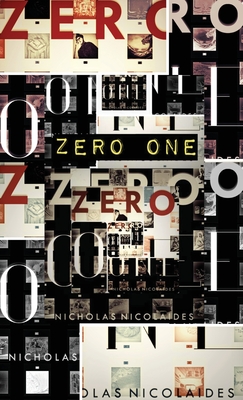Zero One

Zero One
In the early days, no one had fully appreciated just how infectious the virus was. People that fell sick were transmitting the disease long before the symptoms developed. The mortality rate for the infected was much higher than anyone had ever seen before. People went into hospital struggling to breathe and did not come back. Scientists said they believed the virus was a mutation from a non-human virus that had 'jumped' from another animal. They had yet to pinpoint the source or how it had been transmitted.
It was an airborne virus, capable of surviving in free air for half a day and up to a month on certain surfaces, depending on the temperature of the environment.
More and more people were dying, social distancing was encouraged and then enforced with a lockdown. People were instructed to remain in their homes. Anyone breaking the rules was punished with greater and greater severity. Those with a genuine need were required to obtain authorization online.
As front-line services deteriorated, it became harder and harder to enforce. Members of the public that were caught outside without permission were initially fined, repeat offenders imprisoned. But as services crumbled drones were commissioned to help implement the lockdown. The first drones were unarmed; their role was to identify and follow any perpetrators until the police or military arrived.
People booked slots to travel for essential business, their phone sending a signal to any drones in the surrounding area to give them safe passage. Anyone travelling without permission was detained, until the emergency services arrived, or shot trying to escape. The ambulances would take people for testing and isolation. They never came back.
Politicians said that it was an emergency protocol, a necessary inconvenience that would only last until a vaccine was found. The system appeared to be working, for the first time, the rate of new infections began to fall.
Then the power went out.
PRP: 133.80 Lei
Acesta este Prețul Recomandat de Producător. Prețul de vânzare al produsului este afișat mai jos.
120.42Lei
120.42Lei
133.80 LeiLivrare in 2-4 saptamani
Descrierea produsului
In the early days, no one had fully appreciated just how infectious the virus was. People that fell sick were transmitting the disease long before the symptoms developed. The mortality rate for the infected was much higher than anyone had ever seen before. People went into hospital struggling to breathe and did not come back. Scientists said they believed the virus was a mutation from a non-human virus that had 'jumped' from another animal. They had yet to pinpoint the source or how it had been transmitted.
It was an airborne virus, capable of surviving in free air for half a day and up to a month on certain surfaces, depending on the temperature of the environment.
More and more people were dying, social distancing was encouraged and then enforced with a lockdown. People were instructed to remain in their homes. Anyone breaking the rules was punished with greater and greater severity. Those with a genuine need were required to obtain authorization online.
As front-line services deteriorated, it became harder and harder to enforce. Members of the public that were caught outside without permission were initially fined, repeat offenders imprisoned. But as services crumbled drones were commissioned to help implement the lockdown. The first drones were unarmed; their role was to identify and follow any perpetrators until the police or military arrived.
People booked slots to travel for essential business, their phone sending a signal to any drones in the surrounding area to give them safe passage. Anyone travelling without permission was detained, until the emergency services arrived, or shot trying to escape. The ambulances would take people for testing and isolation. They never came back.
Politicians said that it was an emergency protocol, a necessary inconvenience that would only last until a vaccine was found. The system appeared to be working, for the first time, the rate of new infections began to fall.
Then the power went out.
Detaliile produsului










